 This year, Eleveight’s Arthur Guillebert took the GKA Freestyle Tour Championship by storm with a season win that combined both the tour’s longstanding technical freestyle format with points from the all-new big air discipline. Having introduced the sliding, condition-based format in 2019, this year’s return to in-person events was the first time that the big air format has had a decisive influence on the outcome of the freestyle championship.
This year, Eleveight’s Arthur Guillebert took the GKA Freestyle Tour Championship by storm with a season win that combined both the tour’s longstanding technical freestyle format with points from the all-new big air discipline. Having introduced the sliding, condition-based format in 2019, this year’s return to in-person events was the first time that the big air format has had a decisive influence on the outcome of the freestyle championship.
With only two events on the 2021 GKA calendar, the first contest took place in Tarifa. Spain’s fabled Levante 40-knot wind was in full force and event organizers decided to score heats for big air moves only. The second event of the year in Cumbuco, Brazil, experienced more reasonable freestyle-friendly conditions, and athletes were scored for their technical freestyle tricks. Because the events were divided directly down the middle, Arthur Guillebert’s first-place big air finish in Tarifa combined with his fifth-place freestyle finish in Brazil, provided the combined points necessary for him to claim the 2021 World Championship. We caught up with Arthur upon his return home to the south of France to learn more about the brave new world of the freestyle tour.

Now that big air has been added to the freestyle tour, there will inevitably be supporters and critics of the mixed outcome. What’s the overall feel from riders on the integration of the new big air format?
Well, it really depends on the rider; some of the guys prefer 100% pure wakestyle, and others are open to the new format. It’s super challenging to have a freestyle contest in 40 knots of wind. Trying to perform technical tricks in that kind of wind is really hard on the body, and we have had a lot of injuries from competing in these conditions. For me, it’s more logical to adjust the format because we never know what conditions we will have during our competitions. If it’s on the lighter side, then the contest goes full freestyle, but if the winds are in the middle, we get scored for two freestyle tricks and two big air tricks. Finally, if we get strong winds like in Tarifa, the contest is scored for all big air tricks. Since we have contests in all kinds of conditions, it just doesn’t make sense to stick to the high-wind freestyle format if the winning move ends up being a simple raley to blind just because that’s the only thing that we can land in 40 knots. Sure, it’s a problem for the riders who aren’t training for big air, but the GKA wants to push the mixed format in all the events because switching to big air in the right conditions is good for both the riders and spectators.
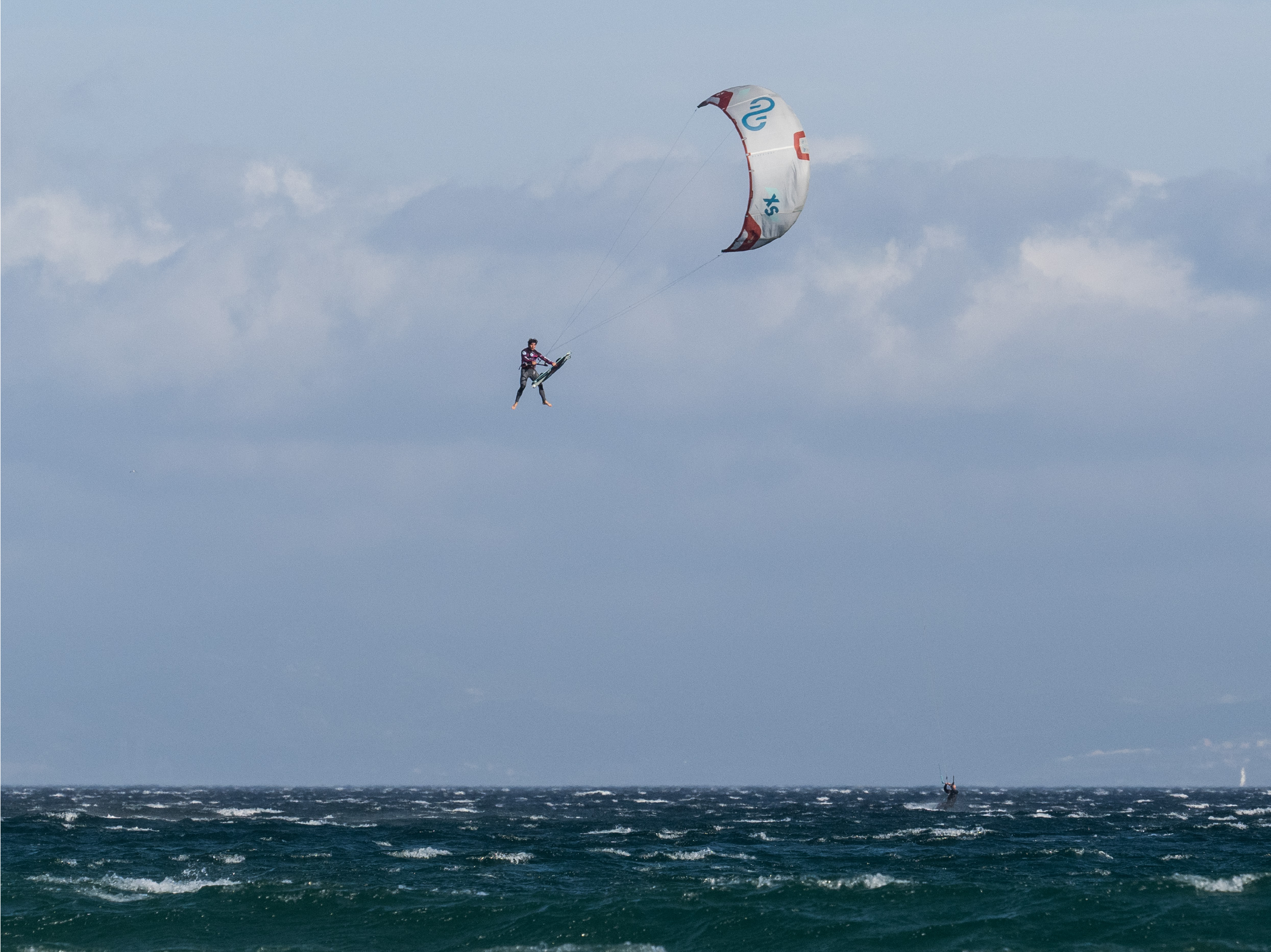
Adding a technical move like a board-off or a rotation into a high-altitude kiteloop adds some spice to the game. Riders like Arthur also take critical kite angles and powered riding very seriously. // Photo Samuel Cárdenas
While your big air points set you up for the season win, your technical freestyle points were legitimate given the competitive roster of riders like Maxime and Carlos. Where did you grow up, and how did you develop such a wide skillset?
I was born in the south of France, in Marseilles, but when I was five, my parents decided to sail around the world. When I was 13, we arrived in New Caledonia, and that was where I started kitesurfing. I ended up at a school where we started training for competitive kiteboarding; from there I went on to win the New Caledonia Nationals, and in both 2014 and 2015, I won the Junior European World Cup. Most of my competitions and training have been focused on freestyle, but since I grew up in New Caledonia, I was always influenced by New Cal local Tom Hebert and his old-school big air style of riding. During the years of the WKL and the introduction of the GKA, I was placing in the top 10 in freestyle. When the GKA announced the new format, I put more time into big air training, and that is what set me up for the win in Tarifa, and consequently, the overall tour.

LEFT: With only two tour stops in the 2021 season, Arthur’s first-place big air finish in Tarifa carried his fifth-place freestyle finish in Brazil to the season win. However, in the highly competitive freestyle pool, any finish in the top ten is impressive. // Photo Svetlana Romantsova CENTER: Arthur waves the French flag high in Brazil after scoring enough freestyle points in Cumbuco to take the 2021 Freestyle World Championship Title. // Photo Svetlana Romantsova RIGHT: Launching a big air on the way to the top of the Tarifa podium, Arthur’s kiteloop training paid off when the Levante came to town and switched the format from technical freestyle to big air. // Photo Samuel Cárdenas
How do you manage your training for both freestyle and big air disciplines?
I have been trying to split my training between freestyle and big air. If the conditions are super strong, then I practice big air, and if the conditions are lighter, I focus on freestyle. I don’t like to focus on one discipline specifically. When I’m in Brazil, in a place like Cumbuco, it can be super good for freestyle, but if I want to train for big air, then I might head north to Jericoacoara.
During my big air sessions, I typically start with tricks that I know I can do. I begin with kiteloops and board-offs, and after that, I go for new tricks. I try to ride with friends as much as possible. In France, I ride with Edgar Ulrich, who is super good in big air; we are always trying new tricks and setting up little games between one another, and it’s pretty much the same for freestyle. Events rarely happen in perfect conditions, so we have to be ready for choppy and gusty conditions. Much like my freestyle mindset, first, I try to master tricks in good conditions, but then I spend time doing the same tricks in harsh conditions. Normally I spend the week before a contest at the event site so I can prepare. Take a spot like the GKA event in Cumbuco””it’s super choppy with waves, and while the wind is good, it takes a bit of getting used to.
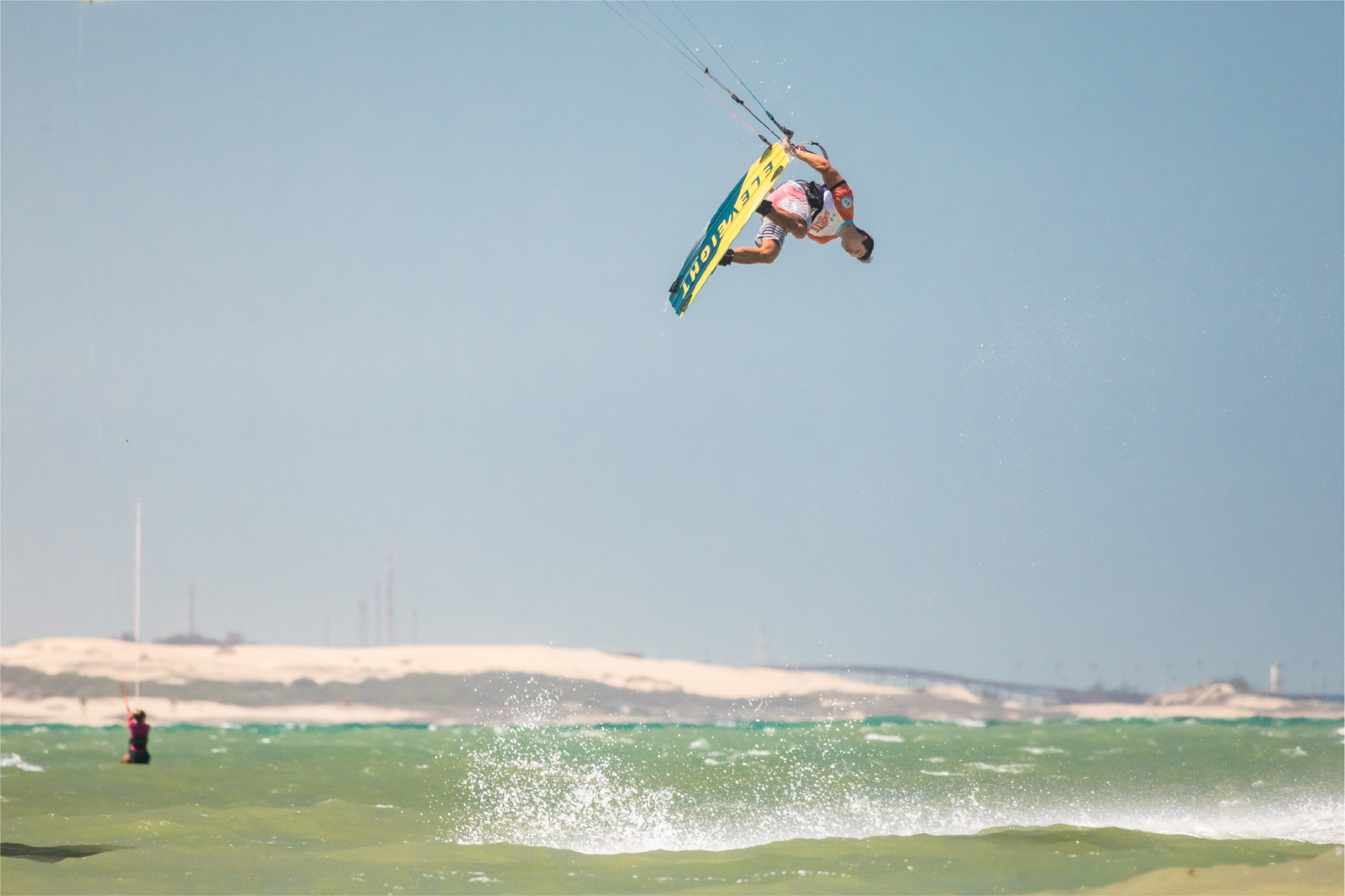
Arthur goes for amplitude in Cumbuco’s pure freestyle event. // Photo Svetlana Romantsova
What gear do you use across the two disciplines?
Well, the XS is the obvious choice for big air because it provides a ton of power and has really good handling. For freestyle, I ride the FS kite. It’s not a pure C-shape like the other kites you see on tour; instead, it uses a bridle which works very well for me. I ride the Commander twintip for freestyle because it gives me more pop and it’s stronger, while I choose the Master twintip for big air riding because it’s much lighter. Eleveight has been really supportive so far, and I’m looking forward to another great year with them.
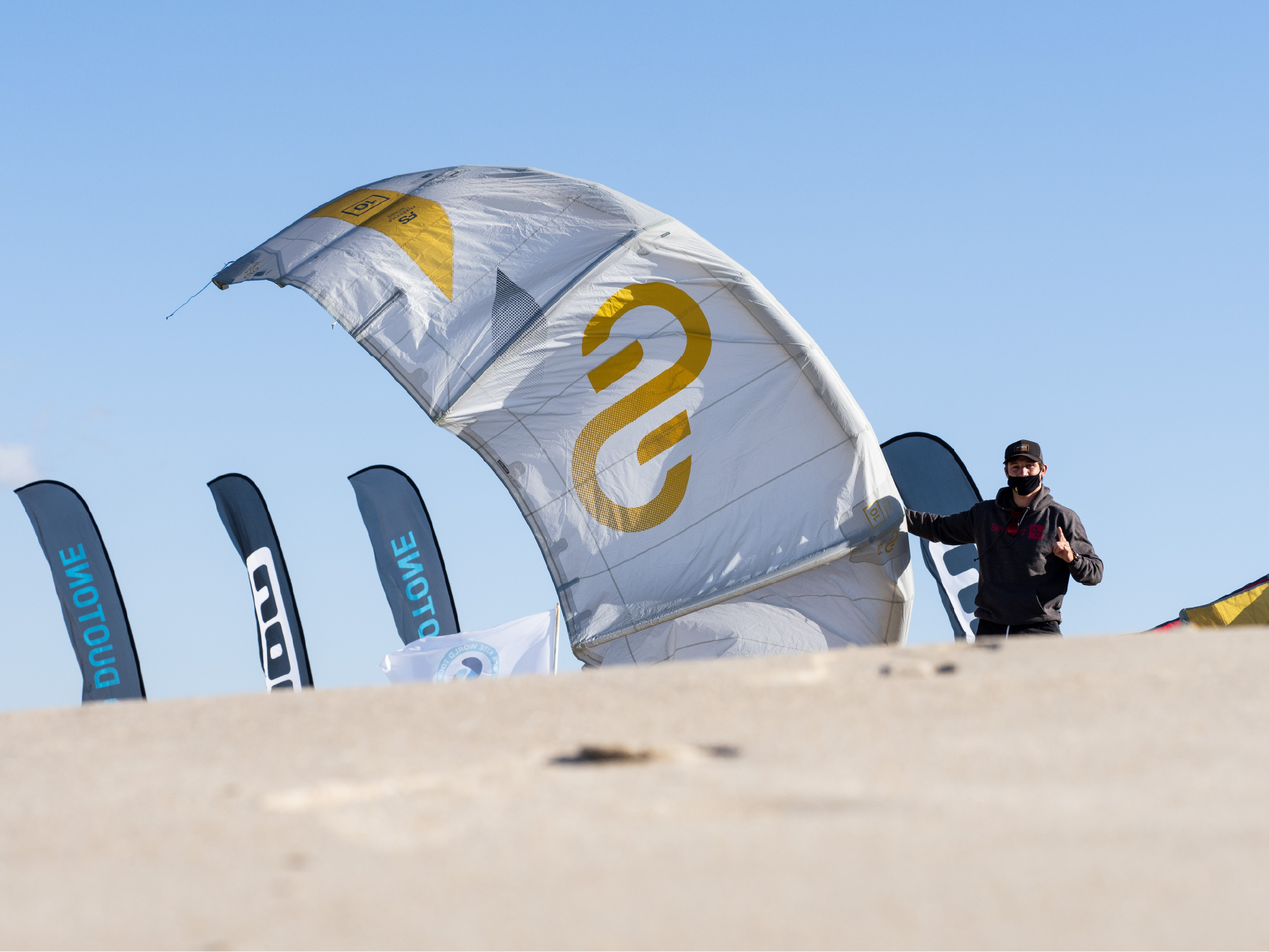
Arthur poses with the FS, his freestyle weapon of choice which most notably differs from typical tour kites due to the implementation of a front bridle. // Photo Samuel Cárdenas
How is the scoring handled in the big air format, and what are your thoughts on the judging?
At GKA events, the judges score each trick based on 50% height and 50% technicality, whereas the King of the Air favors height over technicality, and that tends to lead to more impressive riding. Some riders might have better board-offs, but they are usually doing them at a lower height and with less power. A lot of the riders want to see big air move in the direction of higher tricks with more power.
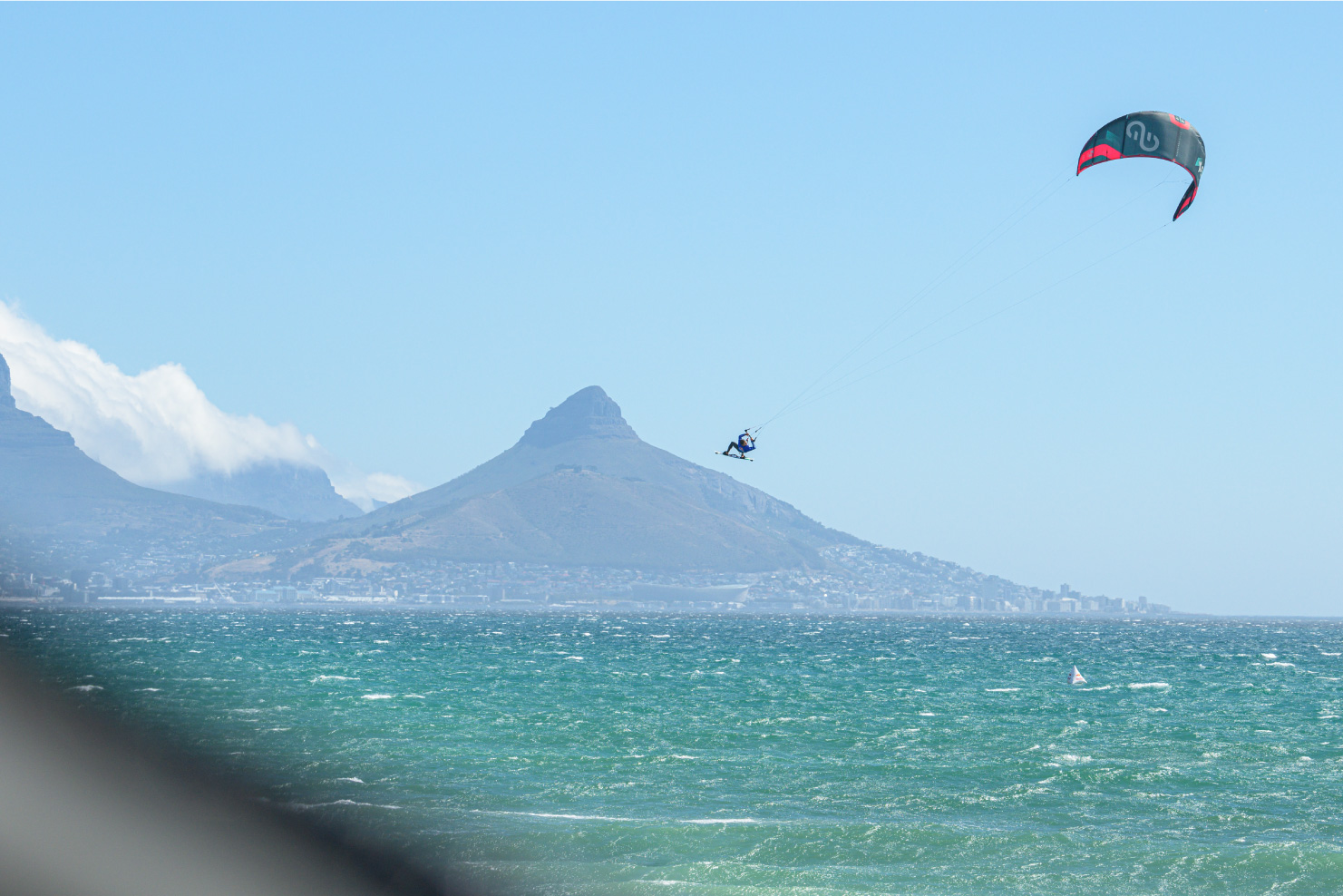
Capably swapping between two very different worlds, Arthur plans to pursue both the big air and freestyle events in the upcoming year. // Photo Tyrone Bradley / Red Bull Content Pool
Having landed a world championship title, what is next for you in the coming year?
This year I finished my studies, so now I can focus completely on kiteboarding. I’m planning to do all the big air events from the Megaloop Challenge to the King of the Air. I will still do the GKA freestyle tour, but since the big air discipline seems to be growing with larger competitions and progressive riding, I think it will be important to keep training in this new direction.
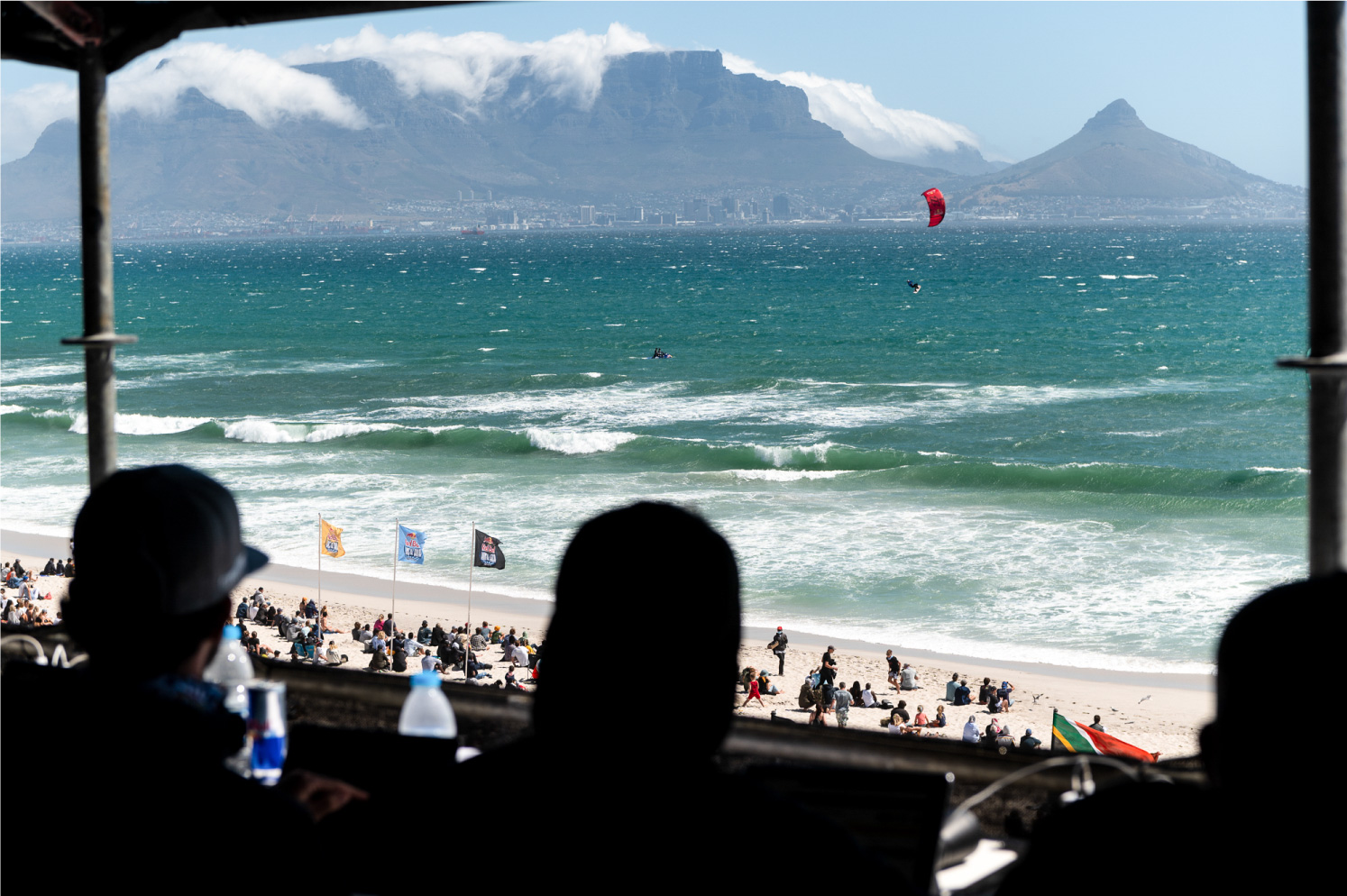
Big contests like the Red Bull King of the Air require the holy trinity of riders, spectators and sponsors. This year, Arthur’s KOTA wildcard video landed him an invitation to compete in the main event. // Photo Tyrone Bradley / Red Bull Content Pool

This article was featured in our winter 2022 issue, Vol. 18, No. 4. To read more, click here.

